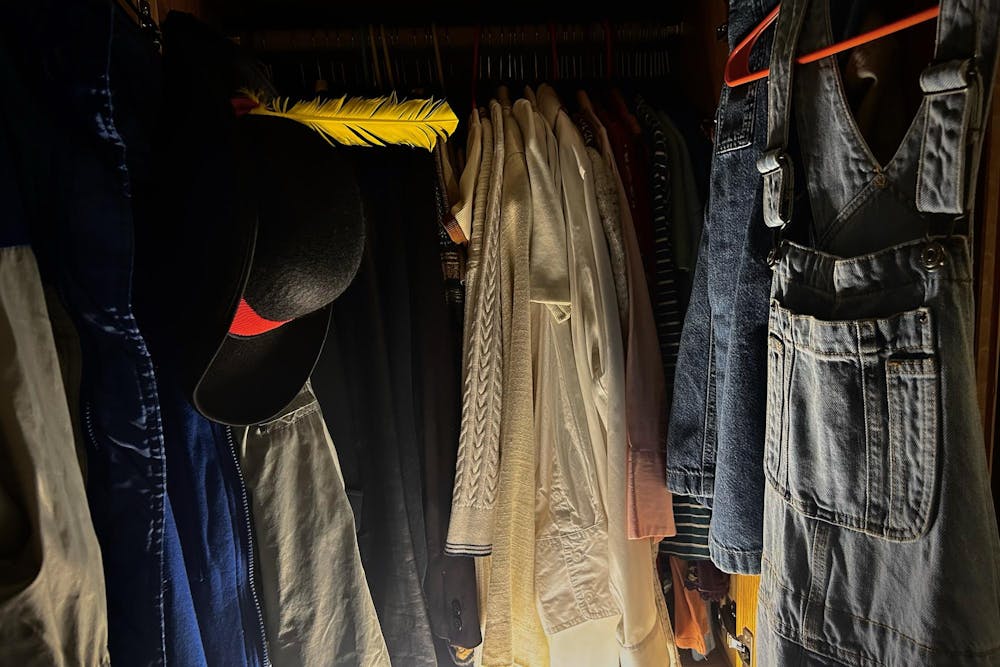With Halloween around the corner, discussions surrounding weekend plans and costumes are swirling around campus. Princeton students celebrate Halloween in a range of attire, from the product of weeks of meticulous planning to whatever was in their closet the morning of.
For some college students with already-limited wardrobe space, making room for a whole costume worn once a year seems impossible. Others just don’t find it meaningful to spend money on a one-and-done piece of fabric. While a seemingly simple task at first glance, picking a festive outfit for a single night — or a full weekend for the brave ones — can become a daunting and wasteful endeavor. As a result, many students are taking a more sustainable approach to Halloween by resourcefully making costumes and contributing to a subculture of sharing.
To tackle this, some students choose to approach Halloween in a more low-key way. Andrew Park ’26 admitted that he takes a casual approach to the holiday.
“I don’t really have a strong inspiration for our Halloween costume. It’s more so using the limit of resources that I have available to me at the moment,” he said.
Instead of choosing the costume first and gathering the needed parts to complete the look, he does the reverse. Scanning his closet and coming to logical conclusions, he considers multiple ideas — his current plan is to dress up as a mafia boss. However, Park admits there is a slight need for an extra prop or two to really complete the desired look.
“There’s still a need to procure props. So, it’s just evaluating what resources my friends have to potentially borrow as well as just checking availability of stuff on Amazon,” he added.
To him and other students, Halloween costumes are a collaborative activity, with friends helping to complete each other’s costumes with articles of clothing they find in their closets. While one white shirt could be someone’s pirate costume, it could be another person’s mad scientist costume for the following year. Some groups of friends take turns wearing entire costumes throughout the Halloweekend. Three nights of parties often means three different costumes, leading some students, such as Briana Vukel ’28, to rely on collaborating with friends.
“I mean, if we end up going to other Halloween parties, we’ll probably switch costumes, honestly,” she said.

Vukel has also held onto purchases from previous years for the sake of saving it for a future costume or a friend.
“I know that when I buy something, I always end up reusing it, so I might not be a bunny next year, but my sister might be or my friend, so I’ll always have it there in case somebody needs it,” she noted.
While some students have had their Amazon carts filled with corsets or extra props to complete their look, others attempt to obtain their dream costume by more creative means.
“I’m thinking of making a cane, but I’m just going to go in the woods and find a stick and sand it and maybe paint a golf ball on top of it,” Destiny Allen ’27 said. As she explained this, she started constructing her Dr. Fallicer hat out of leftover paper scraps and masking tape before me.

Her self-awareness of sustainable practices directly stemmed from her time during COVID-19.
“I was a lot more concerned with sustainability, and also being able to make my own purchasing decisions, because before [COVID-19], my mom made the decisions. So, kind of after that, I was, like, I don’t wanna throw money at something that I’m only gonna use once. It doesn’t seem like a good investment,” she said.
Instead of investing her money in a hat or cane that gets used once and takes up her limited space, she invests her time and creative skills in her costume. And while her special props are handmade, her wardrobe is also sustainably sourced.
“I would estimate 85 percent of the costume is stuff that I already own and wear, and then the stuff that I’m buying is stuff that I would wear again,” she said.
Amanda Hugas is a member of the Class of 2027 and a contributing writer for The Prospect. She can be reached by her email at ah0942[at]princeton.edu.








